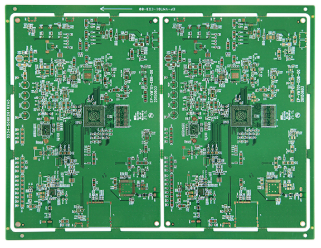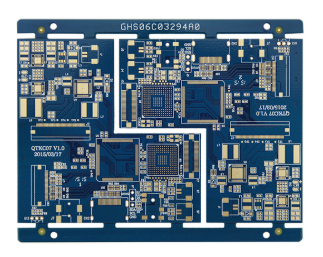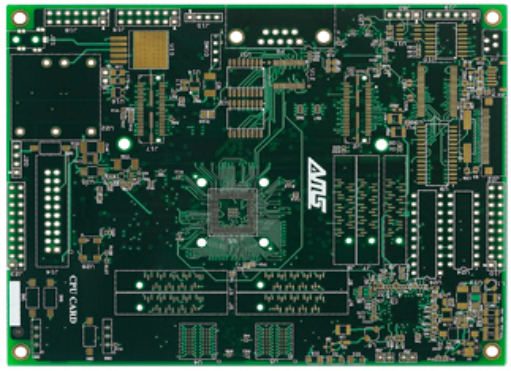Q1: What is SMT assembly?
A1: SMT, brief for Surface area Mount Innovation, describes a sort of assembly modern technology to stick elements (SMCs, Surface Area Mount Parts, or SMDs, Surface Area Mount Gadget) to bare PCBs (Printed Circuit Boards) with the applications of a collection of SMT assembly devices.
Q2: What tools is used in SMT assembly
A2: Normally talking, the adhering to tools is requested SMT assembly: solder paste printer, chip mounter, reflow soldering stove, AOI (Automated Optical Assessment) tool, multiplying lens or microscopic lense etc.
Q3: What are features of SMT assembly
A3: Compared to standard assembly modern technology, that is, THT (Through-Hole Innovation), SMT assembly brings about greater assembly thickness, reduced quantity, the lighter weight of items, greater dependability, greater shock resistance, reduced issue price, greater regularity, reduced EMI (Electromagnetic Disturbance) as well as RF (Superhigh frequency) disturbance, greater throughput, even more accessibility to automation, reduced expense, etc.
Q4: how is SMT assembly various from THT assembly?
A4: SMT assembly is various from THT assembly in the adhering to elements:
- a. Parts made an application for THT assembly attribute much longer leads than those for SMT assembly;
- b. THT assembly requires piercing openings that ought to be pierced on bare circuit card while SMT assembly does not given that SMCs or SMDs are straight installed on PCB;
- c. Wave soldering is primarily used in THT assembly while reflow soldering is mainly used in SMT assembly;
- d. Automation can be anticipated in SMT assembly while THT assembly simply relies on hand-operated procedure;
- e. Parts for THT assembly is hefty in weight, high in elevation and also big in quantity while SMCs can aid to minimize even more room.
Q5: Why is SMT assembly extensively used in electronic devices production?
A5:
- First, present digital items have actually been pursuing miniaturization and also lightweight, which is tough for THT assembly to get to;
- Second, to lead digital items to be functionally incorporated, IC (Integrated Circuit) parts are leveraged to such a high degree to be suitable with huge range as well as high stability need which is simply what SMT assembly makes it possible for to do.
- Third, SMT assembly adjusts itself to quantity manufacturing, automation as well as expense decrease every one of which fulfill the needs of electronic devices market;
- 4th, SMT assembly is put on much better advertise the growth of electronic devices modern technology, ICs and also numerous applications of semiconductor products;
- Fifth, SMT assembly complies with worldwide electronic devices producing criterion.
Q6: In which area of items is SMT assembly utilized?
A6: Currently, SMT assembly has actually been used in sophisticated electronic devices items, particularly those coming from computer system classification as well as telecommunication. Moreover, SMT assembly has actually been made use of in the items from all areas, consisting of treatment, automobile, telecommunication, commercial control, army, aerospace etc.
Q7: What is the common production treatment of SMT assembly?
A7: SMT assembly treatment typically contains solder paste printing, chip placing, reflow soldering, AOI, X-ray examination as well as revamp. Aesthetic examination is executed after each action of the treatment.
Q8: What is solder paste printing and also its duty in SMT assembly?
A8: Solder paste printing describes the procedure in which solder paste is published onto the pad on PCB to make sure that SMCs or SMDs can be adhered to board with the left solder paste on pad. Solder paste printing is executed with the application of pattern on which there are a variety of openings whereby solder paste will certainly be continued pad.
Q9: What is chip installing as well as its function in SMT assembly?
A9: Chip placing adds to the core significance of SMT assembly and also it describes the procedure in which SMCs or SMDs are swiftly positioned onto the solder paste left on PCB pad. Consequently, parts are momentarily adhered to board surface area based upon the bond of solder paste.
Q10: Why kind of soldering is made use of in SMT assembly treatment?
A10: Reflow soldering is utilized in SMT assembly to completely deal with parts on PCB as well as is executed inside reflow soldering stove including temperature level areas. In the process of reflow soldering, solder paste is first thawed in the very first and also 2nd stage under the heat. As temperature level decreases, solder paste will certainly come to be solidified to make sure that elements will certainly be chosen matching pads on PCB.
Q11: Do PCBs need to be cleansed after SMT assembly?
A11: PCBs after SMT assembly need to be cleaned up prior to leaving workshop because the surface area of set up PCB might be covered by dirt, deposits after reflow soldering, change as an example, every one of which will certainly somewhat reduce the dependability of items. For that reason, constructed PCBs need to be wiped prior to leaving workshop.
Q12: What sort of assessment is utilized for SMT assembly?
A12: To ensure the high quality and also efficiency of constructed PCB, assessments are of excellent requirement throughout the entire procedure of SMT assembly. Various sorts of evaluations need to be leveraged to reveal making flaws that will certainly decrease the integrity of output. Aesthetic examinations are one of the most commonly-used in SMT assembly. As a straight evaluation technique, aesthetic assessment can be made use of to suggest some evident physical mistakes, such as element variation, missing out on elements, or element abnormality. Aesthetic assessment does not relate to assessment with nude eyes and also some devices can be made use of too, such as multiplying lens or microscopic lense. To additionally suggest the flaws striking solder spheres, AOI as well as X-ray examination can be leveraged as soldering is finished.
Q13: What demand needs to be fulfilled in regards to SMT assembly workshop?
A13: The basic demand an SMT workshop needs to fulfill is shown as listed below:
Area temperature level: 25 ± 3 ℃ (if it can not be gotten, temperature level control tools is required);.
Area inner elevation: 3 meters;.
Area RH (Loved One Moisture): 45% to 75% (if it can not be gotten, moisture control tools is required);.
Electrostatic demand: 150KR ± 10% (fixed grounding is required).
 PCB Assembly
PCB Assembly
 Layer Buildup
Layer Buildup
 Online Tools
Online Tools
 PCB Design-Aid & Layout
PCB Design-Aid & Layout
 Mechanics
Mechanics
 SMD-Stencils
SMD-Stencils
 Quality
Quality
 Drills & Throughplating
Drills & Throughplating
 Factory & Certificate
Factory & Certificate
 PCB Assembly Factory Show
Certificate
PCB Assembly Factory Show
Certificate




